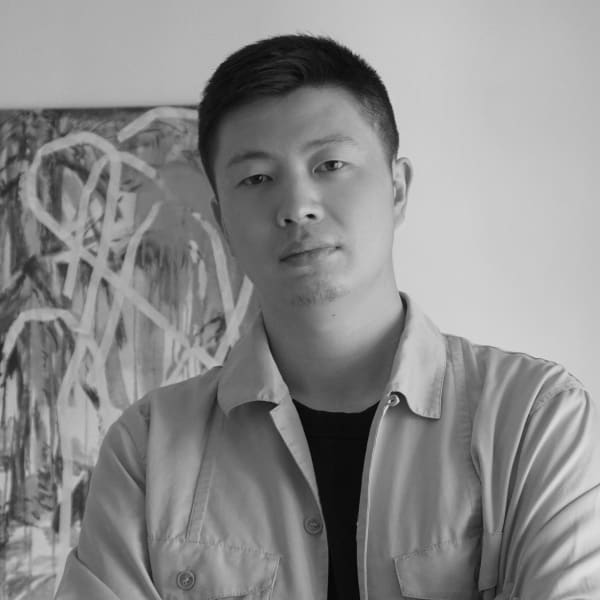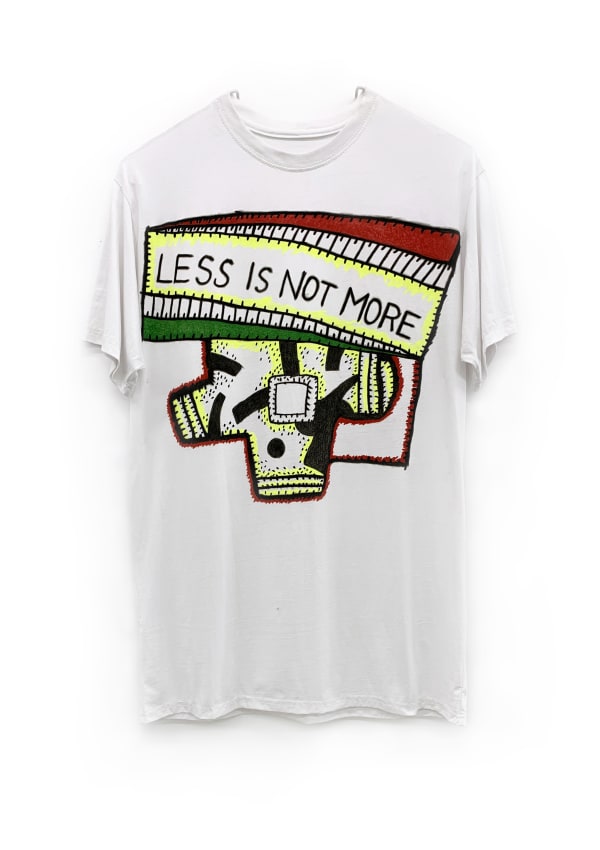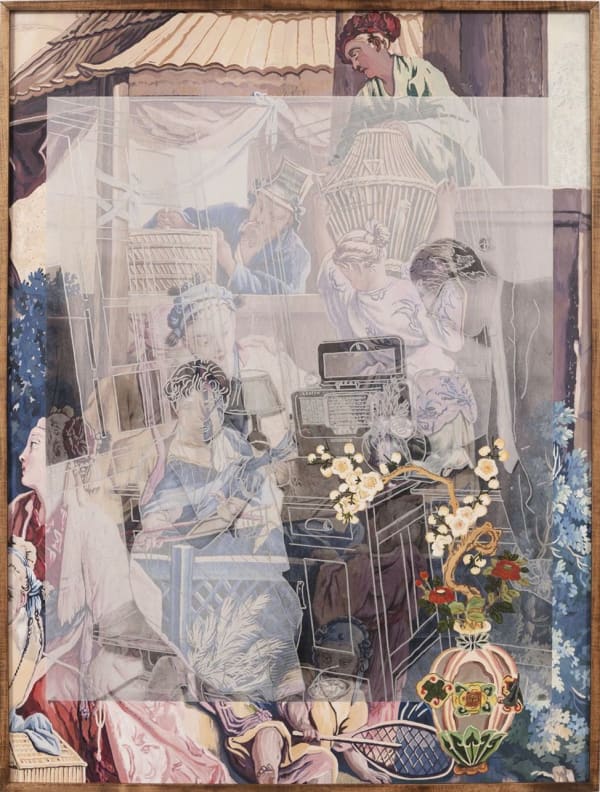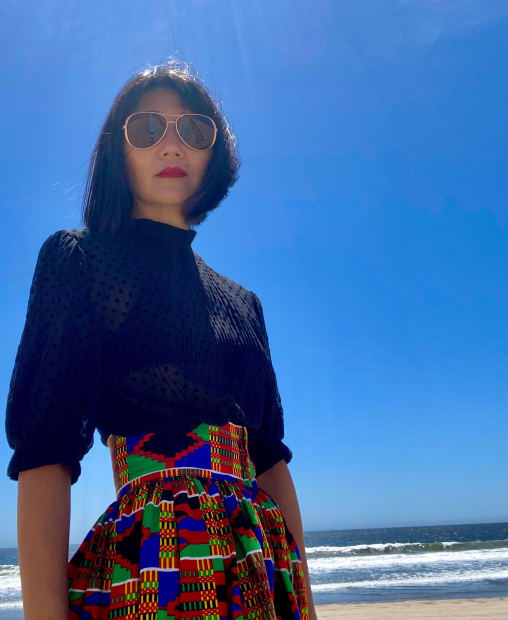
7 May – 21 June 2022
Organized by Danielle Shang
Galerie Marguo is pleased to present The Hearing Trumpet, Part II, the second installment of a group exhibition gathering artists of Asian descent from North America and Europe. The title of the exhibition is adopted from the late Leonora Carrington’s fantastical novel The Hearing Trumpet (1974).
The participating artists include Carl Cheng, Odonchimeg Davaadorj, Damien H. Ding, Heidi Lau, LIU Xin, Amanda Ross-Ho, Runo B, Catalina Ouyang, Dianna Settles, Kyungmi Shin, Astria Suparak, Ziping Wang, Miranda Fengyuan Zhang, and Stella Zhong. Their works span all disciplines and articulate negotiations of multiple and sometimes clashing histories and identities, the processing of trauma and new awareness, and different notions of temporalities and spatialities that are informed by personal memories, collective experiences, and conceived in different social and cultural contexts.
-
-

Leonora Carrington, The Giantess, 1947
Cover artwork of Carrington's novel
-
Participating artists
-
The fourteen artists’ eloquent articulations—expressed through material, object, mark-making and formal language— result from their critical quest into the past and imaginative investment in the present. Collectively, The Hearing Trumpet presents a site of fecund artistic and curatorial experimentation in the search for knowledge and memory. It is also a space for us to make our own claims within the global narratives of contemporary art, highlighting both hybridity and contradiction, in a hope to encourage future projects that challenge the stereotypes about artists of Asian descent and enable a critical dialogue with the East and the West.
This exhibition celebrates the creative agency that pushes limits to re-imagine possibilities for representation, visibility and inclusivity. At the heart of The Hearing Trumpet is the collaborative spirit of community organization that has armed us to survive colonialism, racism, inequality, atrocities and natural disasters. In times of great uncertainty, we hope our presentation will radiate optimism and uplift us all.
-
Amanda Ross-Ho
-
Amanda Ross-Ho’s text-based textile work is derived from the detritus of everyday life, arranged and rearranged into combinations that imply visual poetry and unsolvable puzzles, creating a space of public address, declaration, and resistance.
-
For many years I have been interested in the T-shirt as a mode of communication and the ubiquity of these particular shirts as a known cultural quantity. In the late nineties, already working with scale and appropriation, and urged on by the suggestion of an intentionally oversized T-shirt as well as its intention to be perpetuated, I decided to make a VERY large version which I first showed in Chicago. Over the past decade I have made several other versions, leaning into repetition as part of the logic of commodity, the bootleg, and mass reproduction.
— Amanda Ross-Ho
-
Meanwhile, Catalina Ouyang's menacing chairs address how a subject orients in physical and sociopolitical space: what histories and discourses are inscribed on the body, how the body exists contingent on architectural and bureaucratic structures.
-
-
I work with materials, ideas, and stories that over years I build relationships with. An object or material lives with me for any period from a few weeks to a few years until it expresses how it wants to live. A block of stone, a bone, a knife, a broken chair, an image, a certain kind of beeswax or clay or gel medium. I used to do a lot of intentional/cerebral brainstorming around this--writing, making charts, attempting taxonomies, whatever, trying to establish a diagrammatic logic in the connections--but I have found that the most profound assemblies come to me gnostically. Sometimes a certain phrase or image will get stuck in my head for months or years--'to attend violently,' 'look what you made me do'--and the materials will fall into place around that. Like tetris, but messier, where you are hacking off toes to make the shapes fit.
— Catalina Ouyang
-
-
Astria Suparak
-

Astria suparak
Tropicollage, 2021
Video (1’20’’), loopedEdition 1 of 3+2AP
Astria Suparak’s short, looping video collages thirty-years worth of footage from futuristic sci-fi movies and television shows in which tropical lands are presented as escapist fantasies and prizes for white Americans and Europeans, while dehumanizing Pacific Islander, Asian, Caribbean, and Indigenous peoples.
-
Kyungmi Shin
-
Kyungmi Shin dives deep into both personal and collective fragmented memories, investigating global connections by looking at her father’s life to explore cultural hybridity and monsterization represented in European Chinoiserie objects, as well as the complex narratives of displacement, shifting identity, colonization, and the global economy.
-
Through layering on top of photographs with painting that creates opacity and transparency, I was creating narratives that allude to the complicated stories of the cultural identity, immigration, colonization, and the global economy that drives these movements... In my works presented at the Galerie Marguo, I continue this practice of layering these narratives. I juxtapose archival photographs with chinoiserie artwork images by Jean-François Boucher, layering painted elements over semi-transparent photographic image.
— Kyungmi Shin
-
-
Carl Cheng
-

-
ziping wang
-
Albeit from 50 years apart, Ziping Wang’s physical descriptor of work also addresses mass media. Her colorful, pixelated, graphic paintings or drawings are informed by the overload of visual information that characterizes the attention economy in the digital sphere, as well as the artist’s enduring interest in the gulfs and slippages between representation and meaning.
-

-
LIU Xin
-
Liu Xin’s films explore personal, social and technological spaces in a post-metaphysical world. Her recent research centers around the verticality of space, extraterrestrial investigations and cosmic metabolisms, examining the relationships between gravity and homeland, humanity and technology, and between past, present and future.
-

LIU XIN
The White Stone, 2021Digital Video, 21'57''Collectible includes three archival photographic works, flash drive, and a customized artist boxEdition 3 of 5+2APWhen the rocket lifts off, her body falls.
In this film, we postulate a future history of rocket debris abandonment and recovery, through a “hunt” for abandoned rocket debris in remote areas. The protagonist sets off across valleys and villages, and into the desert in the southwest of China, in a search for the debris of rockets fallen since the 1990s. She may find one, or she may never.
In this story, the white stone is the fallen body of a rocket. Shifting our gaze from the sky back to the ground, we reexamine the life span of technologies, marking the terrestrial death of an extraterrestrial object.
— Liu Xin
-
Stella Zhong
-
Systems of knowledge and hypotheses for the future is also a central concern in the work of Stella Zhong. Her architectural sculpture can be viewed as a proposition of technology’s possibilities, which has the potential to shape future structures and environments beyond our imagination.
-

-
Damien H. Ding
-
Damien H. Ding’s psychologically charged painting navigates between emotions and half-remembered experiences to create a paradoxical moment of simultaneous devotion and alienation, which interact to give way to an alternative path towards the sublime.
-

Damien h. ding
Diptych (Golf), 2022Egg tempera on panelDiptych, each 35.6 x 27.9 cm / 14 x 11 inMy paintings are about the struggle often experienced in attempts to articulate emotions and to provide a source through which these emotions can be felt. My attempts trapeze around the gaps in half-remembered experiences and the nearness of ideas typically seen as diametrically opposed and separate. These gaps and anti-dualistic ideas manifest in experiences of devotion, fetish, and intimacy. To facilitate intimate engagement with painting, I utilize the material and language of furniture and cabinetry as containers and spaces for my images, reminiscent of domestic altars and small chapels.
— Damien H. Ding
-
-
Dianna Settles
-
In comparison, Dianna Settles’ painting gets even more personal, attempting to arrest and transform fleeting moments of joy, isolation, power, and friendship to materialize ephemeral experiences.
-

DIANNA SETTLES
On the stroll of the stolen life (ripe for the taking), 2022Acrylic and colored pencil on panel30.5 x 20.3 x 5.7 cm
12 x 8 x 2 1/4 in -
Heidi Lau
-

-
Heidi Lau’s ceramics reimagine symbolic artifacts and zoomorphic ruins as materializations of the archaic and the invisible. In the process, she reenacts the non-linearity and materiality of the past, molding a tactile connection to the disappearing and impossible identity of home.
-
Runo B
-
Home is also on Runo B’s mind. During the pandemic, he explores the clash and fusion of different cultures, customs and political realities in his paintings of daily objects and stereotypes, which are accentuated with dark humor.
-
My work explores the clash and fusion of different cultures, customs, and ethnicity in specific regions, and the backside of urban landscapes, like my own play with interaction of multicultural, which are often ironic and provocative in a dark comedy way expressing social engagement and political perceptions. I also try to let the daily objects and scenes from certain “cultural stereotypes” to get rid of the general meanings and reorganize them. There are quite a few symbols and signs in my works, like an open text for everyone to read. Through the selected themes, I try to find the sordid memories that both collectively and individually remain silent, insisting on focusing on the daily details and showing the precious moments that have been overlooked and forgotten. What attracts my attention is the back side of the city and the intricate culture, these are the things that separate romance and chaos. In my images, there is no clear and specific depiction, but rather a complex fusion of multiple and harmonious coexistence. Or I am talking about the cruelty and beauty of the world, a kind of spicy breakfast that not everybody likes to eat.
— Runo B
-
Miranda Fengyuan Zhang
-
Miranda Fengyuan Zhang’s hand woven paintings explore the idea of abstract landscapes in relation to memories. The blurry contours and the subtle palette evoke the artist’s sensibility towards the state of transience.
-
-
Odonchimeg Davaadorj
-
Likewise, Odonchimeg Davaadorj’s mythical and poetic paintings and drawings are derived from her shamanic belief in the relationships between human and nature, between communities, and between the past and the future. The body—especially the female body—nature, nomadism and the collective in her work present us a sensitive, dreamlike universe of spirituality.
-
-

Portrait of Danielle Shang
-
More Coming Soon











































